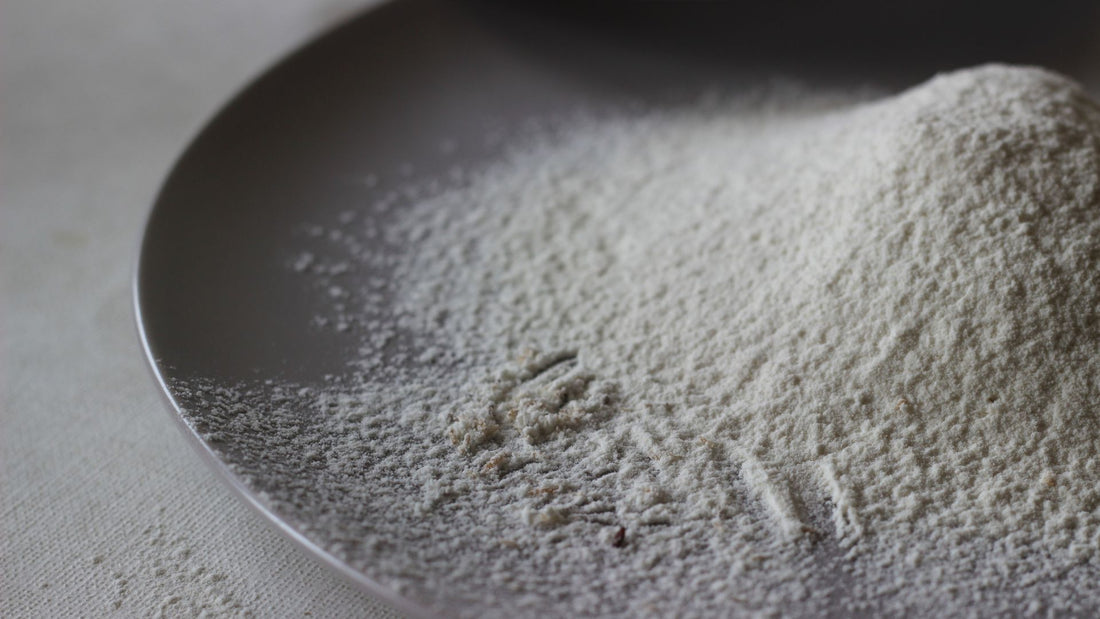Introduction:
In the realm of culinary delights, one ubiquitous ingredient that finds its way into numerous recipes is maida. Often debated for its nutritional value and criticized for its processed nature, maida remains a staple in many kitchens worldwide. Understanding its composition, origin, and common uses is key to appreciating its significance in the culinary world.
What is Maida?
Maida, known as all-purpose flour, originates from refined wheat. It undergoes meticulous processing where the wheat's bran and germ are removed, leaving behind the endosperm. This refining yields a fine, powdery texture devoid of the wheat germ's oil content, giving maida its lighter consistency. Its primary use lies in baking, imparting a soft and tender texture to cakes, pastries, and bread due to its low protein content. Despite its culinary versatility, the refining process strips away essential nutrients like fiber and minerals found in whole wheat flour. This drawback sparks nutritional concerns, prompting a balanced approach to its consumption. Despite these limitations, maida's extended shelf life and texture-enhancing properties secure its place in both home and commercial kitchens globally. Its widespread use spans baked goods, pasta, gravies, and fried delicacies. Appreciating its culinary value while considering its nutritional limitations is vital for incorporating maida sensibly in modern diets.
Composition of Maida:
The composition of maida primarily consists of carbohydrates, with a high starch content and a lower protein content compared to whole wheat flour. It lacks fiber, vitamins, and minerals present in whole wheat due to the removal of the bran and germ during processing. This fine texture makes it desirable for certain culinary applications, especially in baking.
Common Culinary Uses of Maida:
Baking: Maida serves as a fundamental ingredient in various baked goods, including bread, cakes, pastries, cookies, and biscuits. Its low protein content allows for a tender and delicate texture in baked items, resulting in fluffy cakes and flaky pastries.
Thickening Agent: Due to its fine texture, maida is commonly used as a thickening agent in gravies, sauces, soups, and stews. It helps achieve a smooth consistency without altering the flavor significantly.
Pasta and Noodles: Maida forms the base for many pasta and noodle recipes worldwide. Its refined nature contributes to the desired texture and consistency of these pasta varieties.
Fried Foods: In certain culinary traditions, maida is used as a coating for fried foods such as pakoras, samosas, and fried chicken, providing a crispy exterior when deep-fried.
Pastry Dough and Pie Crusts: Maida is an essential ingredient in preparing flaky and buttery pastry doughs for pies, tarts, quiches, and turnovers. Its fine texture creates the ideal crust that is both tender and crisp.
Batters and Coatings: Maida is a key component in batter recipes for dishes like tempura, onion rings, or fish and chips. Its ability to form a smooth batter helps achieve a light and crispy coating when fried.
Crepes and Pancakes: In various cuisines, maida is used to create thin, delicate crepes and fluffy pancakes. Its fine consistency ensures a smooth batter, resulting in light and airy pancakes or thin, flexible crepes.
Baked Pastries and Confectionery: Maida is the base for many delectable pastries and confectionery items like puff pastry, croissants, and Danish pastries. Its ability to create layers and hold butter or fat results in flaky, airy, and buttery pastries.
Pizza Dough: Maida is often utilized in making pizza dough, providing the desired elasticity and chewiness to the crust. Its refined texture allows for a stretchy dough ideal for forming the pizza base.
Breaded Items: Apart from coating for fried foods, maida is employed in creating breaded items such as schnitzels or breaded cutlets. The fine texture helps adhere breadcrumbs to the surface, giving a crispy texture after frying or baking.
Dumplings and Dim Sum Wrappers: In various Asian cuisines, maida is utilized to create wrappers for dumplings, wontons, or dim sum. Its smooth texture allows for easy rolling and shaping of these delicate wrappers.
Cakes and Cookies: In addition to the mentioned baked goods, maida is a key ingredient in making cookies of various textures, from soft and chewy to crisp and crunchy. It contributes to the desired texture and structure in cake recipes, ensuring a light and fluffy crumb.
Nutritional Considerations and Concerns:
While maida is versatile and widely used, its nutritional profile raises concerns. Its refining process strips away essential nutrients, including fiber, vitamins, and minerals found in whole wheat flour. Consuming maida-based products in excess may contribute to spikes in blood sugar levels due to its high glycemic index.
Conclusion:
Maida, despite its processing and debated nutritional value, remains an integral part of various cuisines globally. Its fine texture and versatility make it a go-to ingredient for creating an array of delicious culinary delights, from baked goods to thickening agents and fried treats. Understanding its composition and mindful consumption are crucial aspects to consider while incorporating maida into one's diet.
References:
JoyofBaking.com. "All-Purpose Flour - Kitchen Dictionary." Accessed on 12th January 2023. [https://www.joyofbaking.com/flour.html]
Healthline. "Maida Flour: All You Need to Know." Accessed on 12th January 2023. [https://www.healthline.com/nutrition/maida-flour]
Indian Journal of Endocrinology and Metabolism. "Glycemic Index and Glycemic Load Values of Foods: An Indian Perspective." Accessed on 12th January 2023. [https://www.ncbi.nlm.nih.gov/pmc/articles/PMC3699495/]

